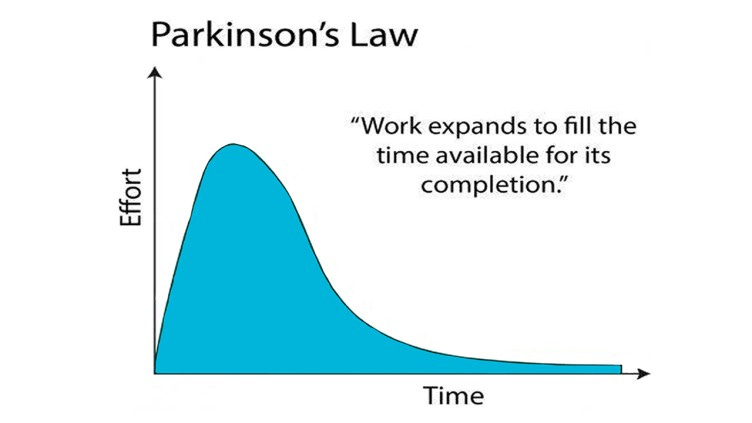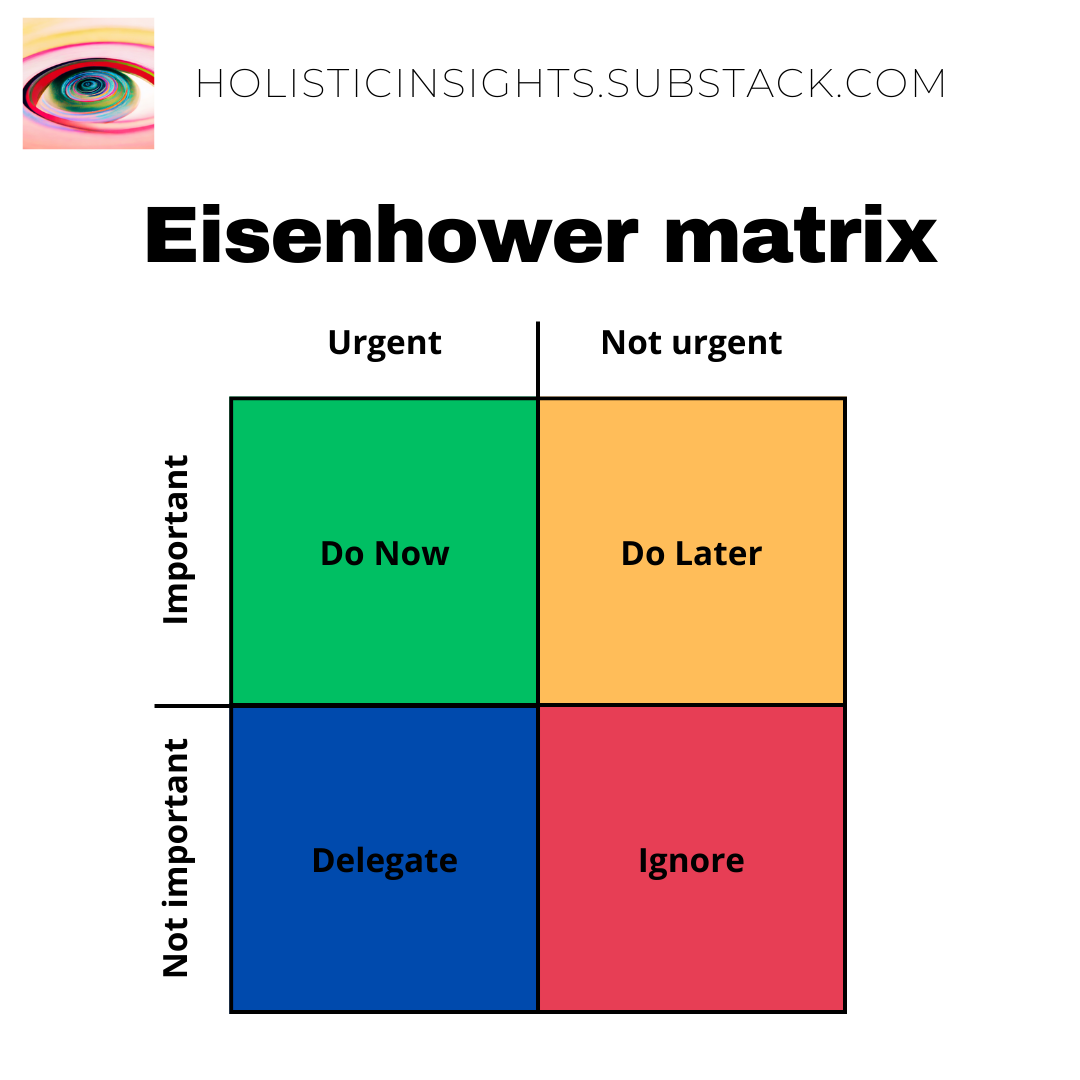Productivity is for robots: do less and get more with these 4 simple frameworks
With the right tools and mindset you can get a big chunk of your time back
You want to spend less time working? You want to spend more time with your loved ones, on your hobbies or just being in the now?
If the answer to any of this is “yes”, then this newsletter is for you.
Don’t worry, I am not going to tell you my “secret formula” to quit your 9 to 5 to start a 4-hour workweek online business making 10k per month…
I strongly believe in building my work around my lifestyle and not the opposite. I know it is not easy for most of us.
We have rent and bills to pay, groceries to do, medical expenses, expensive hobbies etc. So we can’t just stop working (for someone or for ourselves). Hopefully, we might even derive some form of meaning from our “job” and if we are lucky enough we might not even call it this way.
The truth is most of us can’t simply stop working to get more of our time back.
But is all of your work necessary?
Does all your work need to be done now or by you?
Is all your work defined in a way that allows an efficient execution?
Are you using your time properly?
With the 4 tools shared this week, you will be able to answer these questions for yourself and hopefully be equipped to take less time doing the same work and reallocate the free time as you wish (e.g. friends, family, hobbies, nothing…).
Cheers,
Auguste
Pareto principle: not everything needs to be done
“In most situations, 80% of outcomes come from 20% of causes”
Just to get this out of the way: it’s not always exactly “80%” or “20%”. Don’t fixate on the numbers. In other words: a minority of inputs contribute to most of the outputs.
For instance, a minority of your tasks at work will most likely contribute to most of your deliverable. In other words: if you just spent time on 20% of the tasks that matter, it would yield roughly the same perceptible results as spending time on 100% of the task.
Typically, studies have shown meetings are often too long, unproductive, unnecessary and distracting. I am sure you know what they are talking about from experience.
How can you use the Pareto principle?
It’s quite simple. Rank your tasks from the most impactful to the least impactful, with respect to the desired outcome. Pick the smallest group of tasks that yield most of the outcome. Do them, ignore the rest.
You will be surprised to realise the outcome is gonna remain pretty much the same while you will free-up time and gain peace of mind.
I would even argue the outcome will be better. Less tasks and more time means less stress. Less stress means more creativity. More creativity means better ideas. Better ideas means better outcome. Especially since the most impactful tasks will benefit from the better ideas.
I highly recommend you don’t tell anyone. You’ll be amazed nobody will see the difference. Your clients won’t notice, your boss will not notice, your investors will not notice. All your stakeholders tend to focus on the results, not the process. If the process is lighter but the results remain pretty much the same, why would they complain?
Eisenhower matrix: the important tasks don’t need to be done now or by you
The Eisenhower matrix is very straightforward. A task is either urgent, not urgent, important, not important.
if it is urgent and important: do it now
if it is urgent but not important: delegate
if it is not urgent but important: schedule for later
if it is not urgent and not important: ignore
Let’s assume you have already applied the Pareto principle to identify the most important tasks.
Well, you can still free-up some time by organising them into the Eisenhower matrix.
What you should be working on now are tasks that are both important and urgent. I highly doubt all of your activities are always both important and urgent. Don’t hesitate to delegate anything not important but still urgent. And schedule anything important but not urgent.
If you have properly applied Pareto, you shouldn’t have anything in the “ignore” quadrant.
SMART objectives: make your goals/tasks easier to achieve
Do you believe me if I say you can still get some more time back after having applied the Pareto principle and the Eisenhower matrix, without impacting the outcome of your work?
If a task is defined very vaguely with no clear timeline and no way to measure progress, you will most likely end-up going left, then right, then back to the white board, then get stuck and probably end-up spending way too much time on it or just abandoning because you did not properly assess its feasibility or relevance.
This is where the SMART Goals framework can help you.
A SMART goal is Specific, Measurable, Achievable, Relevant and Time-bound:
Specific: Define your goals with clarity and precision. Be clear about what you want to accomplish.
Measurable: Establish metrics to track your progress. Numbers don't lie!
Achievable: Set realistic goals that push you out of your comfort zone but are within your reach.
Relevant: Ensure your goals align with your values and aspirations. Stay true to what matters most to you.
Time-bound: Set deadlines to keep yourself accountable and motivated.
This will ensure your tasks are doable within a certain time-frame. Instead of going left and right, back and forth, you can make steady progress towards the completion of a clearly defined task.
Parkinson’s Law: be more efficient with tighter deadlines
Here comes the last framework of this newsletter.
Just like the previous three, you can use it alone or you can compound it with the others.
So, you got rid of unnecessary tasks (Pareto principle). You scheduled and delegated what you could, and you are now working on the most important and urgent items (Eisenhower matrix). You made sure these items are SMART. So how the hell can you still optimise your time further?
Well, the answer lies in the “T” part of SMART: “Time-bound”.
According to Parkinson’s law, “work expands to fill the time available for its completion”. So, if I give you 1 week to achieve a task you could actually do in a day, you will most likely take the entire week to work on it. You will automatically set the pace according to the deadline.

What does it mean?
If you give yourself way too much time to finish something, you will use all of the time to do it. You’ll take more coffee breaks, you’ll grab your phone and scroll on social media for a little bit, you’ll procrastinate here and there. And most likely, as the deadline approaches you’ll magically regain the focus and make sure you deliver on time.
If you give yourself too little time, the adrenaline will suddenly give you magical powers, you will give uninterrupted focus to the task, but the adrenaline will most likely turn into stress which will make the experience really uncomfortable and unsustainable. It is something you can do once in a while, but if done too frequently or on a regular basis, you are exposing yourself to burnout.
The key is then to define just the right amount of time so that the task can be done in the minimum amount of time that doesn’t results in excessive stress.
How long is this? There are no rules, it depends on the activity, on your stress tolerance, on your lifestyle, on your personality type. It is up to you to figure it out. Just don’t give yourself too much or too little time.
Quote of the week
“The bad news is time flies. The good news is you’re the pilot.”
Michael Altshuler



